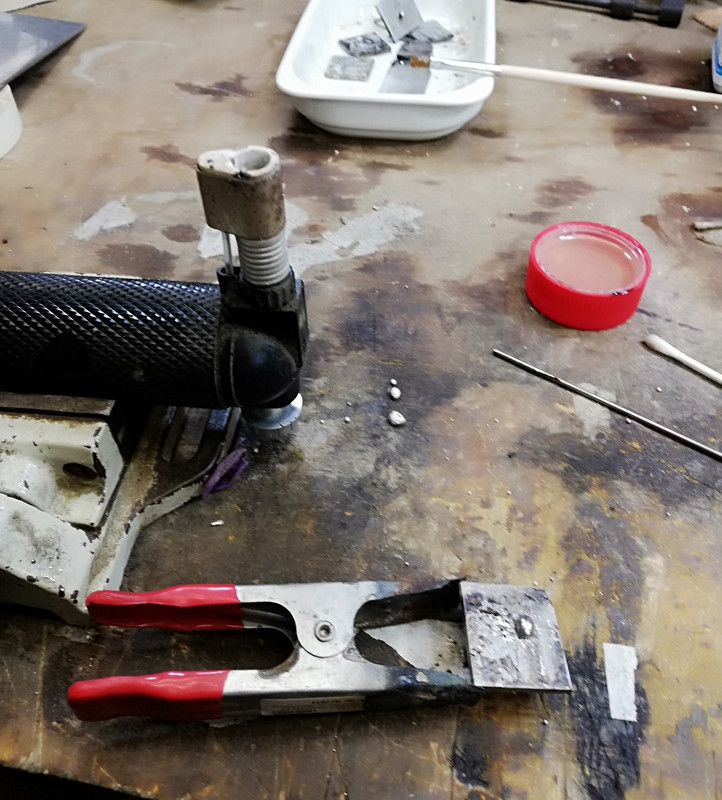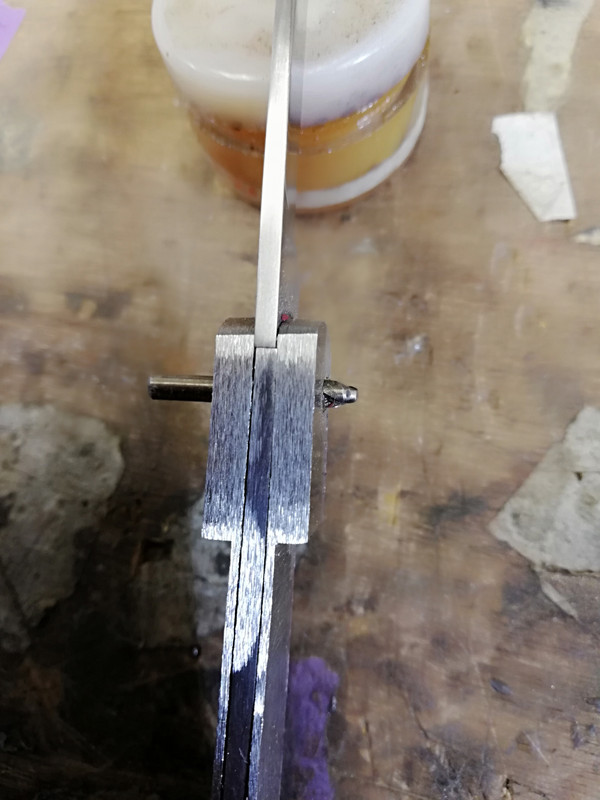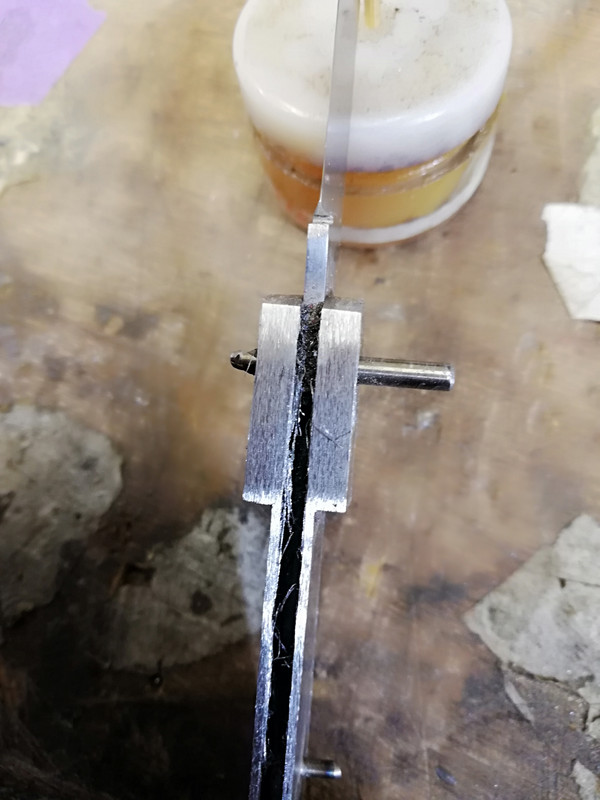Hengelo_77
Basic Member
- Joined
- Mar 2, 2006
- Messages
- 6,193
I'm trying to solder stainless bolsters on to stainless liners.
First I heat the piece from the underside, then apply flux, then I put pieces of solder on to the fluxed steel and apply heat it with a torch from the underside.
I'm using 5%silver solder.
While heating the flux turns black before the solder flows. Then I have a hard time hitting the solder to flow there.
What am I doing wrong?
First I heat the piece from the underside, then apply flux, then I put pieces of solder on to the fluxed steel and apply heat it with a torch from the underside.
I'm using 5%silver solder.
While heating the flux turns black before the solder flows. Then I have a hard time hitting the solder to flow there.
What am I doing wrong?






